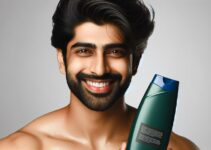If you're tired of feeling like you're fighting a losing battle with your receding hairline or thinning crown, there's good news on the horizon. You may have been hesitant to explore non-surgical hair restoration solutions, but the advancements in this field are worth your attention. From topical treatments to innovative therapies, there are several options available that could potentially help you regain some of your lost locks. But before you dismiss these as mere gimmicks, it's essential to understand the science behind these solutions and how they could possibly work for you.
Key Takeaways
- Minoxidil topical solution is a widely-used over-the-counter treatment for male pattern baldness that can potentially reverse hair follicle miniaturization. However, its effectiveness varies from person to person and it may have side effects such as scalp irritation and unwanted facial hair growth.
- Non-surgical devices like laser therapy caps and scalp massage devices are discreet and convenient solutions for hair restoration. They require regular sessions and can provide practical and effective results for men seeking to restore their hair.
- Hair growth shampoos formulated with ingredients that stimulate hair follicles can be easily incorporated into an existing hair care routine. Scalp massage enhances their effectiveness. Look for products backed by scientific research and positive customer reviews.
- Nutritional support, including nutritional supplements and making dietary changes, can contribute to promoting hair health and addressing hair loss. Key nutrients for hair growth include biotin, iron, zinc, and vitamins A, C, and D. Consult a healthcare professional before starting any supplements and make sure they are part of a comprehensive approach to hair restoration.
Minoxidil Topical Solution
Minoxidil Topical Solution is a widely-used over-the-counter treatment for male pattern baldness, known for its ability to promote hair regrowth. When applied to the scalp, Minoxidil dilates the blood vessels, allowing for increased blood flow, oxygen, and nutrient delivery to the hair follicles. This can potentially reverse the miniaturization of hair follicles and stimulate hair regrowth.
In terms of effectiveness, Minoxidil has been found to be effective in promoting hair regrowth in individuals with male pattern baldness. However, it's important to note that results may vary from person to person. Some individuals may experience significant regrowth, while others may experience minimal to no regrowth.
As with any medication, there are potential side effects to consider. Some individuals may experience scalp irritation, dryness, or itching. In rare cases, Minoxidil may also cause unwanted facial hair growth or a rapid heartbeat. It's important to consult a healthcare professional if you experience any concerning side effects.
When using Minoxidil, it's crucial to follow the recommended application and frequency guidelines. Typically, Minoxidil should be applied twice daily to the affected areas of the scalp. Consistency in application is key to potentially experiencing the desired results.
Laser Therapy Caps
Consider exploring the use of laser therapy caps as a non-surgical solution for hair restoration in men. Laser therapy caps are designed to be discreet and convenient, allowing you to undergo treatment without disrupting your daily routine. Here are some reasons why laser therapy caps may be a suitable option for you:
- Comfortable Design: Laser therapy caps are designed to fit comfortably on your head, allowing you to receive treatment while going about your day. This non-invasive approach ensures minimal disruption to your lifestyle, promoting a sense of ease and convenience.
- *Emotional Response*: You can feel confident and at ease knowing that you can address hair restoration without compromising your daily activities and comfort.
- Treatment Duration: With consistent use, laser therapy caps typically require only a few sessions per week for a specified period. The treatment duration is manageable, allowing you to incorporate it into your routine without feeling overwhelmed.
- *Emotional Response*: You can experience a sense of control and commitment by incorporating a manageable treatment duration into your schedule, fostering a positive outlook on the hair restoration process.
Laser therapy caps offer a practical and effective non-surgical option for men seeking to address hair restoration concerns.
Hair Growth Shampoos
As you explore non-surgical options for hair restoration, laser therapy caps provide a discreet and convenient approach, and now, shifting the focus to hair growth shampoos offers another avenue for addressing your hair concerns. Hair growth shampoos are formulated with ingredients that aim to stimulate hair follicles, promote hair growth, and improve overall hair health. These shampoos often contain key components such as biotin, caffeine, ketoconazole, and saw palmetto, which are known for their potential to support hair growth techniques.
One of the benefits of using hair growth shampoos is that they can be easily incorporated into your existing hair care routine. Additionally, when used in conjunction with scalp massage, these shampoos can further enhance their effectiveness in promoting hair growth. Scalp massage helps to improve blood circulation to the hair follicles, allowing for better absorption of the active ingredients in the shampoo and potentially aiding in hair growth.
When choosing a hair growth shampoo, it's essential to look for products backed by scientific research and positive customer reviews. While hair growth shampoos may not work for everyone, they can be a simple and non-invasive option to consider as part of a comprehensive approach to addressing hair loss concerns.
Scalp Massage Devices
If you're experiencing hair loss, scalp massage devices could be a valuable addition to your hair restoration routine. These devices offer a range of benefits, from increased blood circulation to reduced stress and tension in the scalp. Understanding the types of scalp massagers available and how to use them effectively can help you maximize their potential in promoting hair growth.
Scalp Massage Benefits
Using a scalp massage device can help improve blood circulation and promote hair growth, making it an effective non-surgical solution for men seeking to restore their hair. When you use a scalp massage device, you can experience the following benefits:
- Stress Reduction and Relaxation
- By incorporating scalp massage into your routine, you can effectively reduce stress and promote relaxation, creating a soothing experience that benefits both your scalp and overall well-being.
- Improved Blood Circulation and Hair Growth
- Scalp massage helps increase blood flow to the hair follicles, delivering essential nutrients and oxygen that are vital for promoting healthy hair growth and overall scalp health.
Incorporating scalp massage into your hair restoration regimen can not only enhance your hair's appearance but also provide a calming and rejuvenating experience for your overall wellness.
Types of Scalp Massagers
To explore the various types of scalp massagers, it is essential to understand their unique features and benefits in promoting scalp health and hair restoration for men. Scalp massage techniques play a crucial role in stimulating blood flow to the hair follicles, which can aid in preventing hair loss and promoting hair growth. When considering scalp massage devices, there are several types available, including manual scalp massagers, electric scalp massagers, and vibrating scalp massagers. Manual scalp massagers are typically handheld and require manual movement, while electric and vibrating scalp massagers offer automated functions for a more convenient experience. Each type has its own advantages, and selecting the most suitable scalp massager depends on individual preferences and hair loss prevention strategies. Understanding the different types of scalp massagers can help in choosing the most effective option for promoting scalp health and hair restoration.
How to Use
Wondering how to effectively utilize scalp massage devices for promoting hair restoration and scalp health? Here are some simple steps to help you get the most out of using scalp massagers:
- Create a Relaxing Environment
- Set aside some quiet time for yourself, light a candle, play soothing music, and make it a self-care ritual.
- Massage Technique
- Gently move the scalp massager in a circular motion, applying light to moderate pressure. Focus on areas with tension or discomfort to help release stress and improve blood circulation.
Incorporating scalp massage into your at-home treatments can be a relaxing and beneficial addition to your routine. It's not only about preventing hair loss but also about making positive lifestyle changes to promote overall well-being.
Nutritional Supplements
How can nutritional supplements contribute to promoting hair health and addressing hair loss in men? Making dietary changes and lifestyle modifications can play a crucial role in promoting hair growth and preventing hair loss. Nutritional supplements can provide essential vitamins and minerals that support overall hair health. For instance, vitamin D is important for hair follicle cycling and is linked to hair loss when deficient. B vitamins, particularly biotin, are known to support the production of keratin, the protein that makes up hair. Additionally, minerals like zinc and iron are necessary for hair growth and can help prevent hair shedding.
When choosing nutritional supplements for hair health, look for those containing biotin, vitamin D, B vitamins, zinc, and iron. However, it's important to consult with a healthcare professional before starting any new supplement regimen, as excessive intake of certain vitamins and minerals can have adverse effects. While supplements can complement a healthy diet, they should not be relied upon as a sole solution for hair loss. Maintaining a balanced diet with adequate nutrients, along with regular exercise and proper hair care, is essential for promoting overall hair health.
Platelet-Rich Plasma (PRP) Therapy
Platelet-Rich Plasma (PRP) therapy is a regenerative treatment that utilizes the patient's own blood to stimulate hair growth and combat hair loss. This treatment has gained popularity due to its effectiveness and minimal invasiveness.
- When considering PRP therapy, you may experience a sense of hope and empowerment as you take an active role in addressing your hair loss concerns. Knowing that your body's natural healing properties are being harnessed can provide a sense of reassurance and confidence in the treatment process.
- As you weigh the cost of PRP therapy, it's normal to feel a mix of anticipation and concern. Understanding the potential financial investment involved can evoke a range of emotions, from eagerness for a solution to apprehension about the expenses. However, it's important to consider the long-term benefits and improved self-esteem that may result from this treatment.
PRP therapy effectiveness has been supported by various studies, showing promising results in promoting hair growth. As for the cost, it varies depending on factors such as location and the number of sessions required. Despite the emotional and financial considerations, many individuals find PRP therapy to be a worthwhile investment in restoring their confidence and regaining a fuller head of hair.
Low-Level Light Therapy (LLLT)
After considering Platelet-Rich Plasma (PRP) therapy for hair restoration, you may find Low-Level Light Therapy (LLLT) to be a non-invasive alternative worth exploring. Research has shown that LLLT efficacy in treating hair loss is supported by scientific evidence. LLLT works by stimulating hair follicles, promoting hair growth, and increasing the thickness of hair strands. Additionally, LLLT has been reported to improve blood flow to the scalp, further supporting its effectiveness in hair restoration.
When considering LLLT, it's essential to compare at-home devices available in the market. Many at-home LLLT devices are FDA-cleared and have demonstrated efficacy in clinical studies. These devices are convenient and easy to use, allowing individuals to undergo LLLT treatment in the comfort of their own homes. However, it's important to compare different devices to find the most suitable option based on factors such as treatment time, the number of lasers or LEDs, and overall effectiveness.
Hair Transplantation
Considering hair transplantation as a potential solution for hair restoration? Understand the transplantation process, recovery timeline, and expected results to make an informed decision. This procedure involves a careful extraction of hair follicles from a donor area, with recovery and noticeable growth typically occurring within several months post-surgery. Learn about the nuances of this treatment to determine whether it aligns with your goals for hair restoration.
Transplantation Process Explained
Hair transplantation is a surgical procedure that involves moving hair follicles from a donor site to a balding or thinning area of the scalp. This process can be emotionally rewarding and life-changing for individuals experiencing hair loss. Consider the following emotional aspects:
- Relief: Knowing that transplantation techniques have advanced, providing more natural-looking results, can bring relief to those considering the procedure.
- Confidence: The potential to restore your hair and regain confidence can be a significant emotional factor in deciding to undergo a hair transplant.
Understanding the emotional impact and the potential benefits of hair restoration can help individuals make informed decisions, even when considering the cost of the procedure.
Recovery and Results Timeline
Upon completing the hair transplantation procedure, it is important to understand the recovery process and the expected timeline for seeing results. It's natural to be eager to see the outcome, but it's essential to have realistic expectations about the recovery timeline and expected results.
| Recovery Stage | Timeline | Expected Results |
|---|---|---|
| Immediately Post-op | 1-2 weeks | Mild discomfort, swelling, and scabbing. |
| Early Recovery | 2-6 weeks | Hair shedding is normal as transplanted follicles enter a resting phase. |
| Final Results | 12-18 months | New hair growth becomes noticeable, and the full, natural-looking outcome is achieved. |
Understanding the recovery timeline and expected results can alleviate anxieties and help you better appreciate the gradual, yet rewarding, transformation that comes with hair transplantation.
Frequently Asked Questions
Are There Any Potential Side Effects or Risks Associated With Using Minoxidil Topical Solution for Hair Restoration?
When using minoxidil, watch for possible side effects and risks. Long-term effectiveness and maintenance are important considerations. Stay informed and consult with a healthcare professional to understand the potential impact on your hair restoration journey.
How Long Do I Need to Use a Laser Therapy Cap Before Seeing Noticeable Results in Hair Regrowth?
You should use a laser therapy cap consistently for at least 6 months before expecting noticeable hair regrowth. Studies show its effectiveness in promoting hair growth, but individual results may vary. Be patient and persistent.
Can Hair Growth Shampoos Be Used in Combination With Other Non-Surgical Hair Restoration Solutions?
Yes, hair growth shampoos can absolutely be used in combination with other non-surgical hair restoration solutions. When combining the effectiveness of hair growth serums with scalp exfoliation and massage benefits, you can enhance your overall hair restoration regimen.
What Are the Potential Benefits of Using Scalp Massage Devices in Conjunction With Other Hair Restoration Treatments?
Using scalp massage devices in conjunction with other hair restoration treatments can enhance effectiveness. Benefits include improved blood circulation, which can promote hair growth. Research suggests this combination may yield better results than using treatments alone.
Are There Any Specific Dietary Guidelines or Restrictions When Using Nutritional Supplements for Hair Growth?
When using nutritional supplements for hair growth, it's crucial to follow dietary restrictions to maximize supplement effectiveness. Avoiding excessive alcohol and processed foods, and increasing intake of protein and biotin-rich foods can support hair health.


